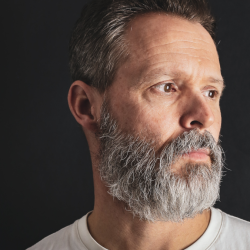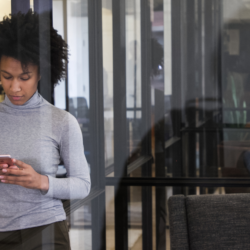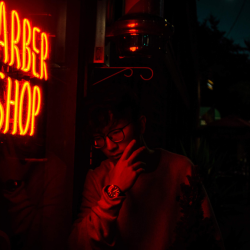Fight or flight is an evolutionary hangover…
Our amygdala senses a threat and floods our systems with adrenaline and cortisol. In the past, these elevated hormones helped our ancestors evade hairy situations and tackle imminent physical threats.
Today, the source of our fears are often trickier to outpace. The world is burning and mental health is catching fire. Covid-19 forced us to face our own mortality, and still haunts us in our sleep. Fearmongering is present far-and-wide, from the right-wing’s ‘Indoctrination Nation‘ to the internet’s Wild West of hate speech. Now, we’re compelled to seek bad news out. We’ve fattened our ancient impulses on a diet of doomscrolling, our survival instincts perpetually switched on. The problem is that fight, flight (and my brain’s personal favourite, freeze) are primitive, outdated responses to our contemporary concerns.
Around the world, people are more anxious than ever. Sadness, stress and worry are at a record-high. Whilst the pandemic was a catalyst, the volume on global misery’s been amping up for a decade. And when unhappiness and ambiguity reign king, we’re less keen to face our problems and confront the unknown.
Here’s the thing: progress demands discomfort.
Humans are creatures of habit, inclined towards self-preservation and the security of all things tried and true. But there’s no growth in the status quo. To discover new opportunities, we must venture out of our comfort zones.
Everything you’ve ever wanted is on the other side of fear
It’s a little like Lord of the Rings. Our ambitions are far-flung destinations, and the journey to reach them requires leaving the familiar behind. But fear isn’t a wall or a treacherous path. It isn’t even Mordor. It’s that bloody ring, always whispering, offering the illusion of safety, corrupting our aspirations with temptation and self-doubt.
Confronting the things we’re afraid of holds transformative power. You can’t enter the chrysalis and remain unchanged. Research from The University of California reported that exposure therapy led to significant improvement in anxiety symptoms. At Kyoto University, a study found that facing your fears positively influenced mental wellbeing and life satisfaction. Carol Dweck’s 2006 research on growth mindset remains influential today, and demonstrates that self-exploration and accepting obstacles as opportunities to evolve leads to higher levels of motivation and achievement.
Who’s in the driver’s seat?
Fear is the feeling of losing control. When we’re stressed, we can’t think straight — literally. According to Yale neuroscientist Amy Arnstern, when we perceive a lack of control, our prefrontal cortexes spin out. This allows our amygdala to take over, pumping the gas on mental paralysis and panic.
More often than not, what we’re afraid of isn’t rational. It’s estimated 25% of us experience a fear of flying, but aviation is safer than ever. The chances of a plane turning into confetti are around 1 in 11 million. A comforting statistic, compared to the risk of dying in a car crash (1 in 5000) — yet folks will meltdown over a spot of turbulence and still forget to strap their seatbelts in.
‘People prefer to make their own choices,‘ explains Dr Tali Sharot, Professor of Cognitive Neuroscience at University College London. Even in situations where the experts know better (e.g. medical staff at hospitals or carers in nursing homes), the anxiety we feel stems from having our choices taken away.
Viktor Frankl was a renowned Austrian psychiatrist who survived the atrocities of four concentration camps, and saw fear as an active opportunity for metamorphosis:
Between the stimulus and response, there is a space. And in that space lies our freedom and power to choose our responses. In our response lies our growth and our freedom.
Viktor Frankl, 1946
Create space for empowerment and wonder
Action is the antithesis of anxiety.
As the Zen proverb goes, the obstacle is the path. When we choose to sit with the uncomfortable, adopt moonshot mindsets, or engage in some light premediato malorum (the Stoic exercise of imagining all that could go awry), our fears lose the power they once held over us.
By stepping out of our comfort zones, we expose ourselves to new experiences, perspectives and possibilities. We open our minds to wonder — to creative thinking, unconventional connections and innovation. The unknown becomes a playground to approach challenges with curiosity. Vernon (1970) called this ‘The Tolerance of Ambiguity’, and considered it the most important trait for creative work.
The best creative work is unapologetically fearless. We must take risks and risk ridicule; we must try, fail, learn and try again. It’s colouring outside the lines that leads to solutions that shape the world and leave a lasting impact. In the words of Ogilvy himself: ‘Frightened people are powerless to produce good advertising.‘
If fear is a coin, its other side is empowerment.
Featured image: Two Dreamers / Pexels































